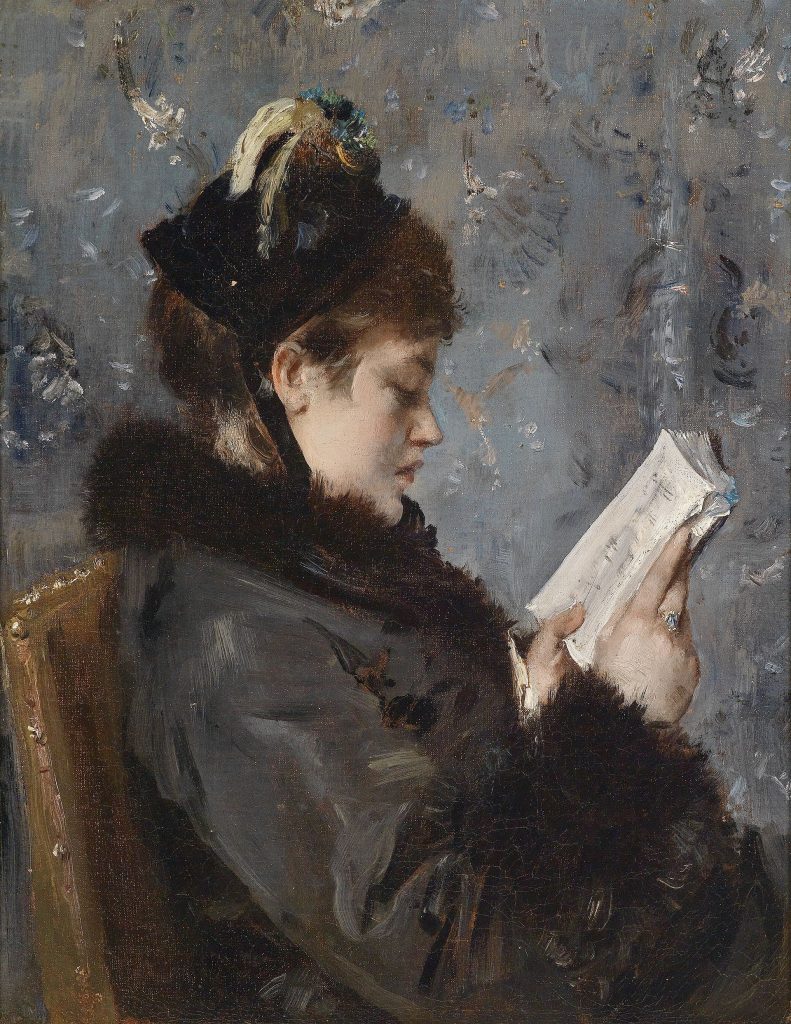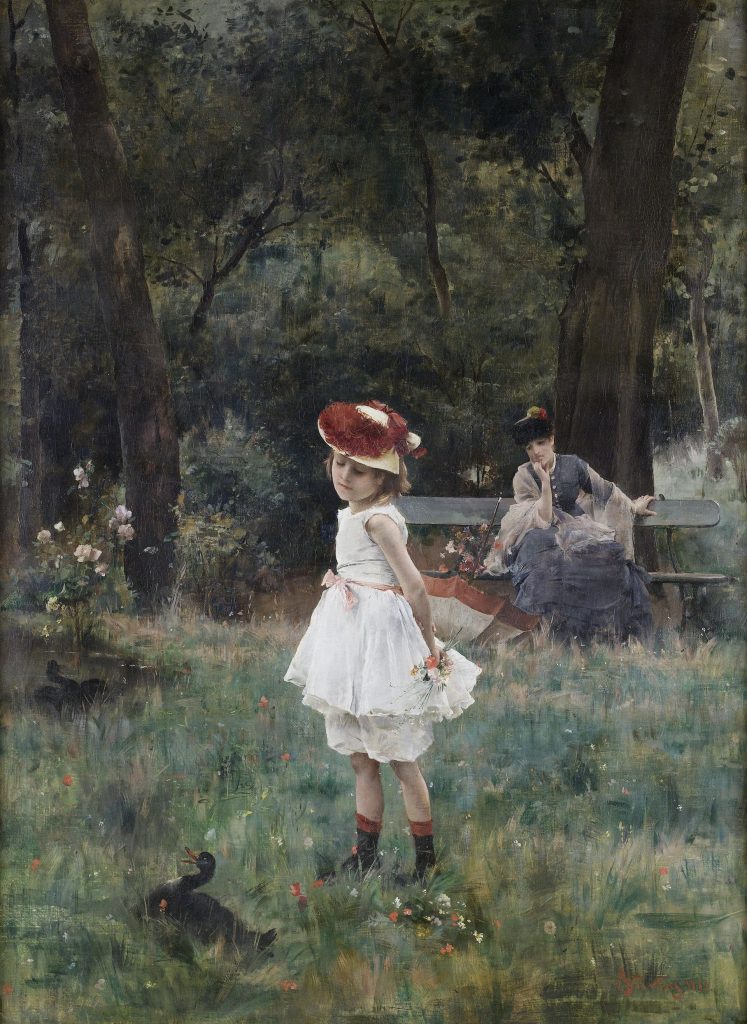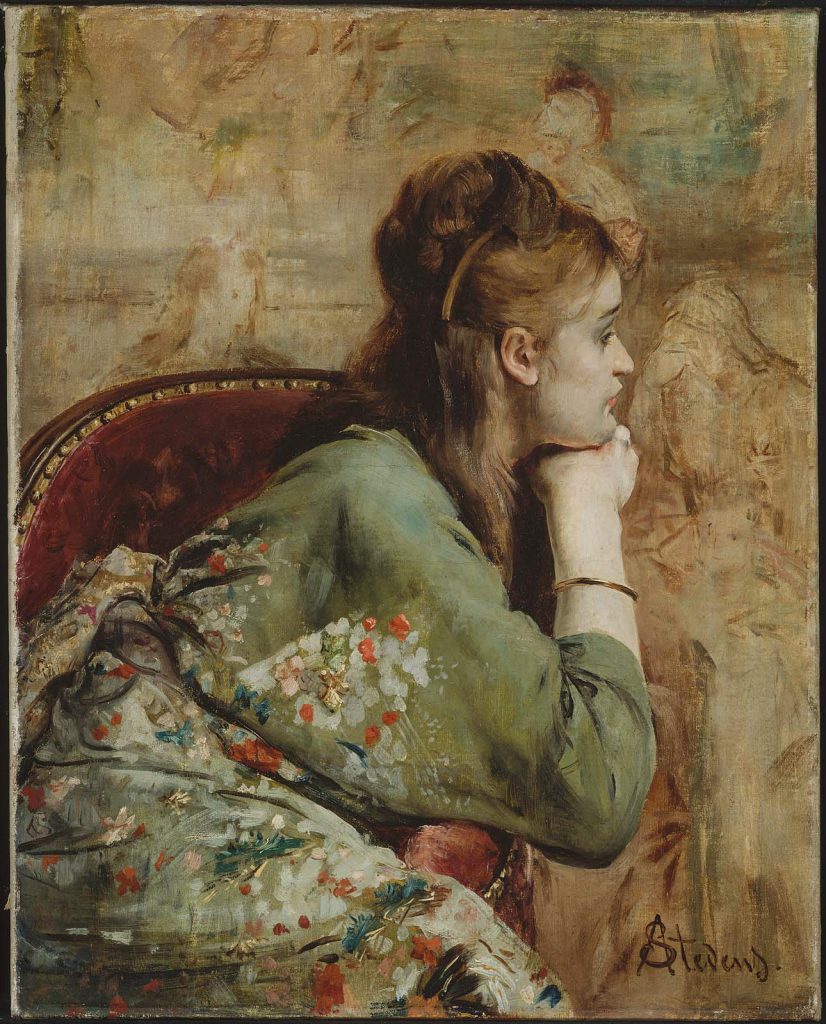
Alfred Stevens (1823-1906) was a Belgian painter, known for his contributions to the art world during the 19th century. He was a prominent figure in the Realist and Academic art movements and is particularly recognized for his paintings of elegant women in domestic settings and his mastery of color and light.

- Early Life and Education: Alfred Stevens was born in Brussels, Belgium. He began his artistic training at the Académie Royale des Beaux-Arts in Brussels, where he studied under François-Joseph Navez, a prominent Belgian painter. Stevens’ early work was influenced by the academic style, which emphasized precise draftsmanship and historical or mythological themes.
- Move to Paris: In 1844, Stevens moved to Paris, which was the artistic center of Europe at the time. In Paris, he came under the influence of the French Romantic movement and was inspired by contemporary life and fashion, as well as the works of painters like Eugène Delacroix and Théodore Géricault.
- Artistic Style: Alfred Stevens is best known for his depictions of fashionable women in elegant, domestic settings. His paintings often portrayed scenes of bourgeois life and leisure, capturing the nuances of contemporary fashion, interiors, and social interactions. He was known for his meticulous attention to detail and his skillful use of color and light to create a sense of atmosphere.
- Influence: Stevens’ work had a significant influence on the development of 19th-century genre painting. He helped to shape the taste for scenes of modern life and played a role in the transition from Romanticism to Realism in French art.
- Recognition: Stevens received recognition and awards for his work during his lifetime, including medals at various international exhibitions. He also became a member of the French Legion of Honor.
- Later Life: In his later years, Stevens continued to paint and exhibit his works, and he received commissions for decorative projects, including murals and tapestries.

Alfred Stevens’ legacy lies in his ability to capture the spirit of his time through his paintings of contemporary life, particularly the portrayal of fashionable women in domestic settings. His work remains appreciated for its technical skill, attention to detail, and its role in the evolution of 19th-century European art.






